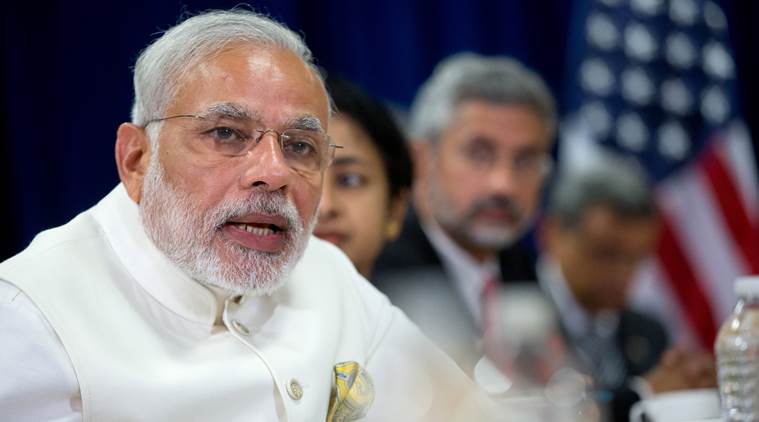Opinion Better weather
PM’s articulation of environment commitments indicates a welcome shift in India’s climate diplomacy.
 Prime Minister Narendra Modi speaks to members of the media following a bilateral meeting with President Barack Obama, Monday, Sept. 28, 2015, at United Nations headquarters. (AP Photo/Andrew Harnik)
Prime Minister Narendra Modi speaks to members of the media following a bilateral meeting with President Barack Obama, Monday, Sept. 28, 2015, at United Nations headquarters. (AP Photo/Andrew Harnik)
For some time now, and especially after last November yielded an unexpected emissions reduction deal between US President Barack Obama and Chinese President Xi Jinping, India has been seen to take an uncompromising zero-sum view of how climate change responsibilities should be shared at international forums. At his summit with Obama on Monday, Prime Minister Narendra Modi appears to have made an aggressive, and welcome, pitch to counter and correct this narrative, in which India is routinely cast as an obstructionist outlier. Though the absence of an announcement along the lines of the US-China deal will have disappointed some — it was always unlikely that Obama could win similar concessions from Modi, given the vast schism in the development levels of India and China — Modi forcefully reiterated the government’s unilateral commitment to boost renewable energy, with ambitious capacity targets for solar (100 GW) and wind (60 GW) by 2022, more than six times the current installed capacities.
This, coupled with his call to developed countries to provide access to finance and technology to enable emerging economies to reduce greenhouse gas (GHG) emissions, indicates a commendable shift in India’s climate diplomacy. Over the past year, India has signalled a willingness to step up cooperation on the issue while attempting to leverage its own domestic initiatives to stave off a deal that shrinks its ability to meet its developmental goals at the crucial UN Conference of the Parties in Paris in December. In the past, India and other developing countries have staunchly stood by the principle of common but differentiated responsibilities, or the argument that wealthy economies like the US must bear the major burden of making emissions cuts to solve a problem they largely created. Many parts of the developed world, on the other hand, have been reluctant to act in isolation, pointing to developing countries’ increased share in global GHG emissions. This wide gap in negotiating positions led to a stalemate in Copenhagen in 2009, and the forecast for a treaty to replace the Kyoto Protocol has been rather gloomy since.
Or it was, until the US-China agreement introduced a new spark of hope.
There could have been no credible or meaningful global agreement without the two biggest GHG emitters in the world. Modi’s “uncompromising commitment on climate change”, along with an earlier acceptance of the pressure from “future generations” to act, demonstrates India’s willingness to play its part. Now, the government must develop a workable long-term plan to wean the power grid off coal, on which it is overwhelmingly dependent.





